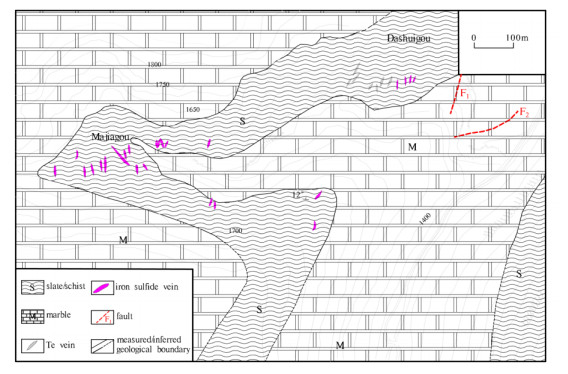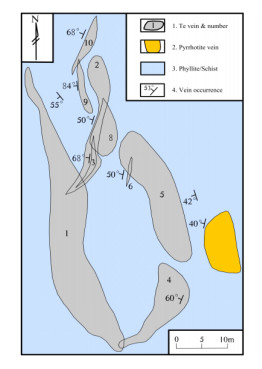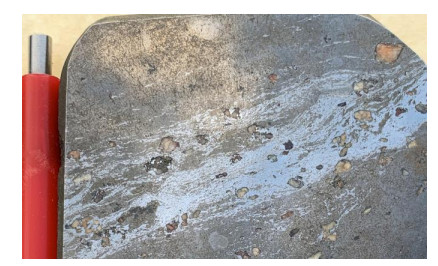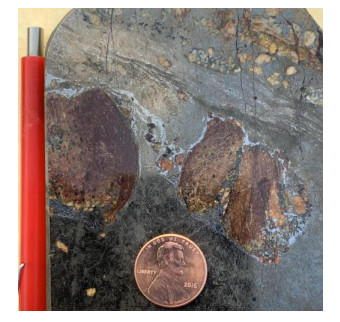1.
Introduction
The introduction of new generations of new energy sources that are different from traditional fossil energy is not, or at least not, just an attempt to alleviate the potential resource crisis that humans may face from fossil energy. It is mainly due to humans' great concern about the huge damage caused by traditional fossil fuels to the earth's environment and incomparable worries about the future sustainable development of mankind.
Therefore, after traditional fossil energy was widely used, humans tried to use new energy sources such as cleaner solar energy and hydrogen energy. To this day, this type of clean energy is used by us to a certain extent.
However, the main problem with this early generation of clean energy is that it is too big and not integrated, or it is too difficult to intensify and the cost is too high. Therefore, it is difficult to be widely used in compact computers, mobile phones, watches and cars, which are indispensable in people's daily lives. As a result, as we have seen, this type of clean energy is difficult to promote.
As a result, metal or natural mineral energy, which is sufficient to overcome the weaknesses of the older generation of clean energy, namely solar energy and hydrogen energy, while retaining its unique advantages, emerged due to the diligent pursuit and unremitting efforts of scientific and technological workers.
The biggest advantage of metal energy is that it can be highly integrated. Therefore, it can be widely used in various small and efficient electronic products and cars that people are inseparable from today. The introduction and increasingly widespread use of metal energy vehicles has greatly improved the air quality and ecological environment on the earth's surface, and improved the quality of human life.
Energy metals, which have suddenly emerged in recent decades, have been one of the focuses and hot spots for research, development, and pursuit by the geological and mining communities. Human beings' daily life, such as food, clothing, housing, and transportation, have been closely connected with electronic products made of these metals, consciously or unconsciously. They are inseparable and coexist and die together.
Almost all types of electronic and non-electronic products that humans are currently keen on using, such as mobile phones, computers, watches, clocks, cars, etc., are driven by new batteries made of this type of energy metal, namely energy metal batteries.
Because of the global scarcity and importance of these metals, many countries classify them as critical minerals or strategic minerals. The so-called critical or strategic minerals refer to minerals that foreign investors cannot intervene in the exploration and development. In short, except for domestic mining companies that can explore and develop these metal minerals, overseas capital cannot directly get involved.
At present, the most commonly used energy metals by humans and the most familiar to everyone are lithium, cobalt, and nickel. Of course, there is nuclear energy that was developed and used earlier than these rare metals, but that most of us are not often exposed to. It is a special metal energy derived from uranium.
Furthermore, humans are exploring the possibility of studying other minerals as substitutes or supplementary energy minerals and/or metals, such as graphite.
The scale and global resource potential of these most popular energy metals are not very large, and they cannot be compared with bulk mineral products such as iron, copper, lead, zinc, silver, gold, tungsten, tin, molybdenum, etc. Thus, which is the next generation energy metal that is more efficient? What is its resource potential in the world? This is what this article is about.
2.
Next-generation battery
Many people have never heard of tellurium. However, this is about to change, as a next-generation battery that is smaller and more powerful than presently available will be produced [1,2]. The key material for this kind of battery is tellurium, which has high electrical conductivity and a high volumetric capacity. As a result, tellurium will become more and more popular and well known in the near future. While rechargeable lithium-ion batteries are currently the most popular on the market, the latest test battery includes a flexible gel polymer electrolyte that allows lithium ions to move between lithium anode and tellurium cathode. This results in a quasi-solid-state lithium-tellurium battery that has improved performance compared to lithium-sulfur and lithium-selenium batteries [1,2,3,4]. The high purity of tellurium along with the metal's overall attributes makes it ideal as a rechargeable battery material.
As some of you may know, tellurium, which is vital for energy and technology, plays an important role in the following relatively well-known clean energy devices especially in the solar energy revolution:
● High-efficiency thin-film, cadmium telluride (Cd-Te) solar panels preferred for large-scale and utility applications, so tellurium is called the second-most utilized solar material in the world after silicon.
● As the most important metal for using heat to generate electrical power, tellurium is a key material in thermoelectric products and/or devices.
● Tellurium's unique chemical properties also make it a key material in semiconductors, low-energy desalination and phase-change memory chips fields.
In recent years, some universities, scientific research institutions and companies in Canada, the United States, Germany, Switzerland and the United Arab Emirates (Dubai) are joining forces to develop next-generation energy metal batteries. This battery is closely related to tellurium, as it is new lithium tellurium (Li-Te) batteries. This includes Canada's UBC branch in Okanagan, which is relatively at the forefront in this regard.
Because of tellurium's good application prospects, some mining companies have also kept pace with the times and jointly conducted research and development on tellurium with some scientific research institutions. For example, Canada's mining company First Tellurium Corp. cooperates with FTEL for potential future tellurium extraction and purification plus other synergies to achieve a vertically integrated enterprise for cleantech metals.
Relevant studies believe that all solid state, lithium tellurium batteries enable higher energy output with an improved safety rating inside a smaller form factor, thereby expanding its possible applications. Moreover, with more power, the new lithium tellurium (Li-Te) batteries may last up to four times longer than the conventional lithium-ion batteries. We expect that the new batteries to be in commercial production in the near future.
3.
Tellurium and its resource
Tellurium is one of many rare dispersed elements. The so-called scattered elements refer to those rare elements that have very few stocks in the earth's crust, their abundance in the earth's crust is very low, and most of them cannot form independent deposits. These rare scattered elements are not only rare for most people to see, but many people have never heard of their strange names [5,6,7,8,9,10].
Nevertheless, with the development of science and technology and social progress, people have found that scattered elements play an irreplaceable and important role in many key fields, especially such as high technology, military and national defense, clean energy, and medical care.
This section briefly discusses the chemical and geochemical properties of the rare dispersed element tellurium, a brief history of its discovery, main uses, known global resource distribution and approximate resource amounts, major mineral deposit types, mineral processing, extraction technology, and market.
3.1. Chemistry and geochemistry
Tellurium was first discovered in 1782 by German mineralogist Franz Joseph Müller von Reichenstein while he studied ore from a gold mine in his country. In the same year, Muller, the supervisor of a mine in Vienna, Austria, extracted tellurium from the ore that was mistaken for antimony. Muller sent a few samples to Swedish chemist Bergman for identification. Despite the insufficient amount of the sample, Bergmann determined that it was not antimony, but possibly a new, then unknown element [5,6,7,11].
In 1783, Müller became interested in ore with a metallic luster from a mine near Zalatna, Romania. After preliminary research, he speculated that the metallic luster should be native antimony or bismuth (AuTe2). However, Müller's final research proved that the ore contained neither antimony nor bismuth, but might contain a new element. Thus, he published this discovery in an unknown magazine at the time, but it did not attract people's attention.
In 1789, Hungarian scientist Paul Kitaibel sent Müller some samples. In 1796, Müller sent a sample to Martin Klaproth in Berlin. Klaproth used it to extract a pure sample and decided to call it tellurium. On January 25, 1798, when Klaproth read a paper about the gold mine in Transylvania at the Berlin Academy of Sciences, he re-proposed this element that may have been forgotten by people at the time. He dissolved this ore in aqua regia, used excess alkali to partially precipitate the solution, removed gold and iron, and found this new element in the precipitate, which he named tellurium and whose element symbol was Te. The word comes from the Latin tellus, meaning earth.
Tellurium, usually a silver-white orthorhombic crystal, is a semimetal. It is soluble in sulfuric acid, nitric acid, aqua regia, potassium cyanide and potassium hydroxide, but insoluble in cold water, hot water and carbon disulfide. High-purity tellurium is made from tellurium powder as raw material and extracted and refined with sodium polysulfide, with a purity of 99.999%. It is used as an additive for semiconductor devices, alloys, chemical raw materials, cast iron, rubber, glass, and other industries [5,6,7,11,12]. Tellurium has two allotropes, one is hexagonal crystal tellurium, which has metallic luster, silvery white, brittle, similar to antimony; the other is amorphous powder, dark gray or black. Medium density, low melting point and boiling point. Tellurium is a non-metallic or semi-metallic element with very good heat transfer and electrical conductivity. Tellurium is the most metallic of all non-metallic elements. As a semiconductor, its forbidden bandwidth is 0.34 electron volts.
The tellurium's Clark value in the Earth's crust varies between 1.34 × 10-9 or 1.34 ppb and 5.0 × 10-9 or 5.0 ppb worldwide [5,6,7,13]. Because of its extremely low Clark value, Te was believed by the traditional geological theory that it could not form independent deposits, but occurred only as associated component in other metallic deposits [8,9,10,14].
According to research by Tu et al. [11], 96% of tellurium on the earth is concentrated in the earth's core. Tellurium on the surface mainly comes from the mantle. Tellurium can also accumulate in organic matter. Limestone, shale and floating sediments are all important reservoirs of tellurium. The content of tellurium in different rocks or geological bodies varies. Tellurium can exhibit sulfur affinity and oxygen affinity respectively. Tellurium in nature can present six valence states −2, −1, 0, +2, +4, and +6.
There are more than 190 kinds of tellurium minerals existing in nature. In addition to native tellurium, tellurium is mostly combined with chalcophile elements such as Au, Ag, Cu, Zn, Bi, Pb, and platinum group elements such as Pt and Pd to form tellurides, tellurium sulfur (selenium) compounds, tellurium oxides and oxysalt, and other minerals [15]. As early as 1980, there were 95 tellurium minerals discovered in the world and officially approved by the Committee on New Minerals and Mineral Nomenclature of the International Mineralogical Society (CNMMN, IMA). As of 2022,193 tellurium minerals have been discovered and officially reported. Among the huge tellurium mineral family, the common telluride minerals include tetradymite, tsumoite, calaverite, hessite, petzite, tellurobismuthite, joseite, ingodite, and hedleyite etc. [11,12,15,16,17].
3.2. Tellurium use
In different historical periods of the development of human society, tellurium has had different uses. In other words, more new uses for tellurium are being gradually developed by humans, step by step. Generally speaking, tellurium is mainly used in metallurgy, chemical industry and catalysts, photovoltaic solar panels, electronics and many other aspects [18,19,20].
In the information age, tellurium shines in applications such as thermal semiconductors and storage devices. It can be used to make military and civilian equipment such as optical discs, radars, and electronic refrigerators. It can also be used as a good power source to contribute to the aerospace industry and missile engineering. In storage device applications, tellurium and its compounds can make hard disk reading speeds thousands of times faster. Obviously, in the face of increasingly complex and huge amounts of electronic information, the exploration and research of telluride storage devices is the general direction for future hardware upgrades.
In the new energy era, tellurium-containing battery films that perfectly match the solar spectrum are used for photoelectric energy conversion. For this reason, the industry widely believes that tellurium will become a key material for mankind to transition from the traditional fossil fuel era to the new solar era. For example, as a new generation of green battery materials, solar photovoltaic thin film cells using cadmium telluride as the main material are called "oil fields hanging on equipment". This is mainly due to the superior conversion ability of cadmium telluride. In recent years, more and more developed countries have included this kind of battery in key development projects.
Although the important role of tellurium and its compounds in medical treatment has just emerged, it has already made people full of expectations and confidence. For example, preliminary clinical treatment effects show that tellurium and its compounds have a certain control effect on tumors such as leukemia.
In China, tellurium is mainly consumed in the "sunrise industries" of photovoltaic cells and thermal semiconductors. The gradually increasing proportion of tellurium in emerging technology consumption illustrates the important position and research value of tellurium in China's future new energy era.
3.3. Resource
According to statistics from the United States Geological Survey [21,22], the total global tellurium reserves are approximately 31,000 tonnes, of which China accounts for approximately 61.29%.
According to relevant reports in 2017, rich reserves of undersea tellurium deposits were discovered in the submarine mountains 500 kilometers away from the coast of the Canary Islands, estimated to reach 2,670 tonnes of tellurium, accounting for approximately 5% of the current world's total reserves [12,23].
China's associated tellurium deposits are distributed in 16 provinces and autonomous regions across the country. Among them, Jiangxi Province has the largest amount of associated tellurium resources, reaching 13,490 tonnes. In the Chengmenshan copper mine in this province alone, the amount of associated tellurium resources is as high as 5,571 tonnes [24].
3.4. Tellurium beneficiation and market
At present, the major extraction methods of tellurium include the following [2,11,12,18,25]:
Copper anode mud extraction process, which is the main method of recovering tellurium in the world. 90% of the world's tellurium is produced from anode sludge collected during copper electrolysis. Tellurium mainly exists in the form of Ag2Te, Cu2Te, (Au, Ag)Te2, and Te, with a tellurium content of 2–10%.
Extracting tellurium from copper anode mud will move towards a combined wet and fire anode mud extraction process in the near future. Emerging tellurium recovery technologies such as liquid membrane separation and microbial methods are also developing rapidly.
As of 2021, the world's annual tellurium production is approximately 580 tonnes. As a major producer of tellurium, China mainly recovers tellurium from copper anode sludge using fire or semi-wet methods.
At the beginning of 2021, a Chinese tellurium producer announced that it would double its tellurium production from 3 tonnes per month, which is an increase of 72 tonnes per year.
A Canadian producer has announced further investment in a new ultra-high purity tellurium production line. The line is expected to produce tellurium of up to 7N purity (99.99999%) for use in cutting-edge technologies such as digital and solid-state radiation detectors [21,22].
Compared with around US$20,000 per ton in the early 20th century, the market price of tellurium has increased significantly in recent years, fluctuating around US$65,000 per tonne. While global tellurium production continues to increase every year, the price of tellurium remains stable, indicating that its consumer market is good and its future is bright.
In terms of global tellurium export volume, Canada ranks first, and Germany is catching up. As the world's largest producer and consumer of tellurium, China's exports of tellurium are decreasing year by year.
China is the world's largest country of tellurium resources. With the advancement of science and technology and changes in market supply and demand, China's demand for tellurium is rising rapidly at an annual growth rate of about 80%. According to this prediction, tellurium supply will exceed demand in China in the next few years. Therefore, it is reasonable to predict that the Chinese government will strengthen the market supervision of tellurium resources and at the same time improve the protection, development and utilization of tellurium resources [20].
3.5. Deposit type
Tellurium deposits can be divided into associated deposits and independent deposits. Among them, the former are the major ones, and the latter are very rare in the world.
4.
Associated tellurium deposit
Even now, the world's leading source of refined tellurium is mainly recovered from Te-bearing minerals including chalcopyrite etc. As a result, the supply of refined tellurium is limited [8,10,18].
Associated tellurium deposits mostly include the following types: Porphyry deposits, magmatic copper-nickel-platinum group element deposits, volcanic massive sulfide deposits, iron oxide copper-gold deposits, orogenic deposits, epithermal deposits, skarn deposits, carlin-type gold deposits, and other types of deposits [11,23,26].
Klondike Te-Au-Ag property in Colorado of USA has high surface and mine dump sample tellurium grades up to 3.3% Te, 33.7 g/t Au, and 364.8 g/t Ag, respectively. The property has a 2.4 km-long vein system comprised of high-grade Au-Ag-Te and broader zones of bulk-tonnage Au-Ag-Te mineralization, and thus was thought to be one of few significant tellurium discoveries outside of Asia. As a result, First Solar Inc., one of the world's largest solar panel producers, planned to use Klondike as a potential primary source of tellurium for manufacture of the company's cadmium-telluride (CdTe) solar panels.
As a typical polymetallic porphyry W, Cu, Mo, Bi, Pb, Zn, Ag, and Au property, Deer Horn property in west-central BC, Canada has high grades for Te (160 ppm).
The industrial grades (%) of different types of associated tellurium ores and/or deposits are as follows: Copper nickel ore: 0.0002–0.0006; natural sulfur deposits: 0.001–0.02; copper-bearing pyrite ore: 0.001–0.016; copper-bearing pyrite: 0.01–0.08; copper-molybdenum sulfide deposits: 0.0008–0.005; copper-molybdenum ore: 0.03; copper, lead and zinc ore: 0.001; cobaltite, telluride-selenide ore: 0.0002–0.0007; various low-temperature tellurium-gold deposits: 0.001–0.01 [11].
China's associated tellurium is mainly produced in epithermal deposits, skarn-type copper deposits and magmatic copper-nickel sulfide deposits, accounting for 44.77%, 43.89%, and 11.34% of China's associated tellurium reserves, respectively. Among them, the associated tellurium reserves in the Dabaoshan copper mine in Qujiang, Guangdong, the Chengmenshan copper mine in Jiujiang, Jiangxi, and the Baijiazuizi copper-nickel mine in Jinchuan, Gansu account for 94% of the national associated tellurium total. Among them, the associated tellurium has been recycled and utilized on a large scale in skarn copper mines in the middle and lower Yangtze River [16]. China's tellurium-rich gold deposits are mainly distributed around the North China Craton, especially in the Xiaoqinling-Xionger Mountain area, such as the Shanggong gold mine, the Yangziyu gold mine, and the Qiyugou gold mine, etc., Hebei such as the Dongping gold mine, Jinchangyu gold mine and Shuiquangou gold mine, etc., and parts of Shandong such as Guilaizhuang gold mine, and Jinqingding gold mine, etc. [17].
5.
Independent tellurium deposit
The Dashuigou tellurium deposit located in Shimian County, Sichuan Province, China, is the only independent tellurium deposit discovered in the world so far (Figure 1) [27,28,29].
Since its discovery in 1992 [27,30], many geologists have conducted various studies on it [8,9,10,14,31,32,33,34,35,36,37,38,39,40,41,42,43,44,45,46,47,48,49,50,51,52,53,54].
Geotectonically, the Dashuigou tellurium deposit is located in the transitional belt between the Yangtze para-platform and Songpan-Ganzi folded belt [29,55], as part of the Qinghai-Tibetan plateau (Figure 1) [9,10,29].
Geological, geophysical and geochemical data indicate that the deposit is located in an unusually active region of the upper mantle. Therefore, the area is rich in various mineral resources, and the Dashuigou Tellurium mine is just one of them.
The mine encompasses a set of the lower-middle Triassic low-grade metamorphic rocks including marble, phyllite, and schist; all of which collectively make up a NNE-trending dome. The tellurium deposit is located at the northeastern end of the Triassic metamorphic dome. The ore bodies' main wall and host rocks are schist and phyllite (Figure 2).
The host rock has undergone multiple tectonic movements and various alterations such as dolomitization, tourmalinization, muscovitization, silicification, sericitization, and chloritization, as well as tellurium, bismuth, gold, silver, lead, copper, pyrite, and pyrrhotite mineralizations.
Linear faults and circular structures intersected and superimpose with each other to form the special and typical Ø-shaped structures, which control the formation of a variety of mineral deposits, including the Dashuigou tellurium deposit itself.
The ore bodies, which strike around 350–10 degrees with a dip of 55–70 degrees towards west and are with widths varying between 25 and 30 cm, are controlled by and fill in a group of shear fractures (Figures 2 and 3).
Two paragenetic stages and five sub-stages are recognized in the deposit; namely, the pyrrhotite stage comprising of three sub-stages, dolomite sub-stage → pyrrhotite sub-stage → chalcopyrite sub-stage (from early to late); and the tellurium stage comprising of two sub-stages, tetradymite sub-stage → tsumoite sub-stage.
Typical mineral combination of the early stage is coarse grained dolomite + coarse grained pentagonal dodecahedral pyrite + pyrrhotite + biotite + albite + tourmaline + chlorite + quartz, while the typical mineral combination of the late stage is tetradymite + tsumoite + tellurobismuthite + dolomite + quartz + chalcopyrite + native gold + native silver + galena (Figures 4 and 5).
More than 30 minerals including ore minerals such as tetradymite, tsumoite, tellurobismuthite, gold, silver, and electrum in the ore have been identified. These ore minerals comprise 85% of the massive and semi-massive ore. Gangue minerals include pyrrhotite, pyrite, dolomite, quartz, chalcopyrite, galena, magnetite, ilmenite, and hematite, with minor calcite, calaverite, siderite, mannesite, rutile, muscovite, biotite, sericite, hornblende, chlorite, plagioclase, K-feldspar, tourmaline, garnet, apatite, and epidote. The tellurium grade in the ores varies between 0.01wt % and 34.58wt %.
Replacement, remnant, reaction border, and granular are the ore's dominant textures, while massive, vein/veinlet, and stockwork vein are the deposit's dominant ore structures. Tetradymite replaced pyrrhotite and the latter appeared in telluride as a pictographic residue. Early-formed minerals are often replaced by later-formed minerals and appear as metasomatic residues. Tetradymite underwent a metasomatic reaction with pyrrhotite to form typical reaction edge structures. Solid solution textures between chalcopyrite and tetradymite are common.
6.
Result and discussion
Although the world's first and currently only independent tellurium deposit has been discovered and mined, for a long period of time in the foreseeable future, the main source of tellurium, one of the new generation of high-efficiency energy metals, will be associated tellurium deposits such as large-scale porphyry copper deposits, than this lonely independent tellurium deposit. After all, it is difficult to sing alone, and a single branch is not spring. This independent tellurium deposit with limited reserves and resources is obviously unable to provide a large amount of tellurium resources that can be widely consumed around the world in the near future.
The more important significance of the existence of the Dashuigou independent tellurium deposit in China may lie in carefully studying it in detail and establishing a practical and effective mineralization model and prospecting model, and then on this basis, more similar independent tellurium deposits can be found around the world. This will completely change the current situation in which associated tellurium ore dominates the source of tellurium, thereby providing more high-grade tellurium ore resources and providing a solid material foundation for the future research and development of more efficient energy metal batteries related to tellurium.
What's more worth looking forward to is that as technology continues to advance, we have reason to believe that humans will develop more cheap and high-quality energy metals. By then, the well-known energy metals that we currently rely on such as lithium, cobalt and nickel, and sthe tellurium discussed in this article, may be replaced and fade out of the stage of history.
7.
Conclusions
Tellurium will occupy an increasingly important position in the new generation of clean and efficient energy metals, and will attract more and more attention.
As natural mineral seekers, global geologists are faced with the important task of discovering more high-quality energy metals. There is no doubt that this mission is glorious and arduous, and geologists have a long way to go. The road of exploration never stops, and human civilization will always shine brightly.
The wonder of nature is that its generous gifts are always beyond our expectations. In other words, humans will definitely discover more rare dispersed elements that can be used as energy metals, although the probability of mineralization of such elements is very low. Therefore, our future must be bright. In this regard, as earth scientists, we am confident about the future of planet Earth.
Use of AI tools declaration
The authors declare that they have not used Artificial Intelligence (AI) tools in the creation of this article.
Conflict of interest
The authors declare no conflicts of interest.
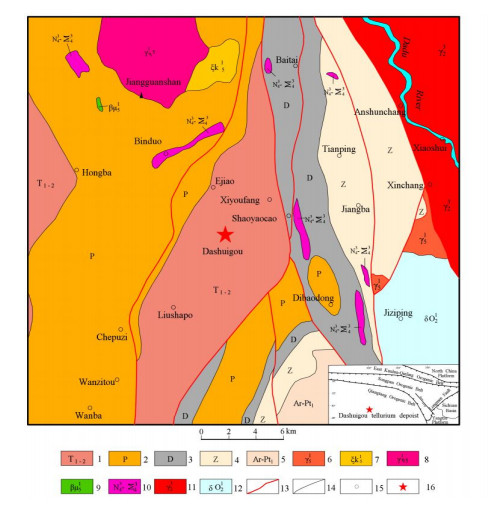









 DownLoad:
DownLoad:
